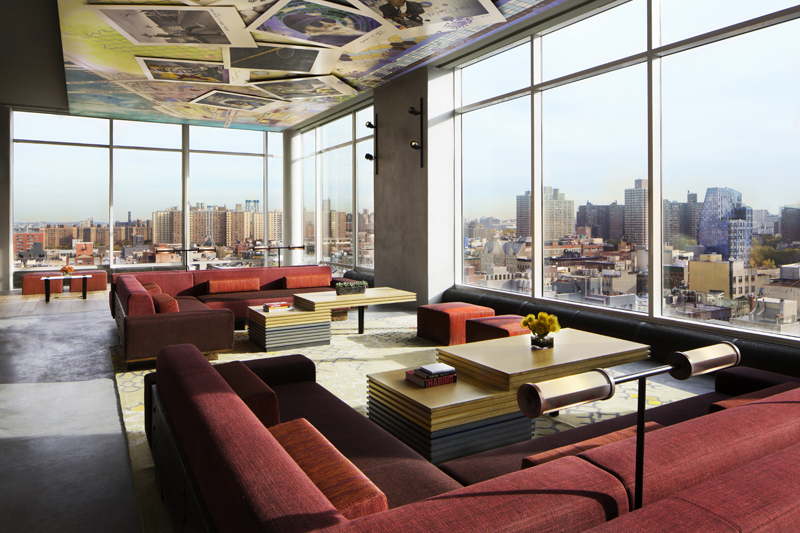It’s all good if you’re in the hotel business.
Occupancy rates in the U.S. are expected to remain at record levels through 2017, according to PKF Hospitality Research|CBRE Hotels, which also projects room rates to increase by 5.5% and 5.8%, respectively, this year and next.
With demand exceeding supply, developers are expected to deliver 103,230 hotel rooms in 865 projects in 2016, according to the latest Comprehensive Pipeline Summary from the market research firm STR.
Through November 2015, the existing supply of hotel rooms nationwide stood at 5,031,859. A total of 457,606 rooms were under construction or in various planning stages.
For all the talk about the rise in demand and construction of luxury hotels, STR foresees the greatest number of hotel rooms—53,725 rooms—being delivered in the “upper midscale” classification, followed by 43,150 “upscale” room deliveries. Conversely, STR estimates that only 15 luxury hotels with 3,468 rooms are expected to open this year.
New York, with an existing supply of 117,367 rooms, leads the nation with 80 hotels and 13,583 rooms under construction, followed by Houston (with 79,255 existing rooms and 6,269 under construction), Dallas (79,572; 4,361), Los Angeles/Long Beach (98,186; 4,240), and Washington, D.C. (107,776; 3,949).
Jan Freitag, STR’s Senior Vice President of Lodging Insights, told USA Today that while room construction was up 21% over a year ago, the 1.5% increase in rooms opening in 2016 would still be below the longer-term annual average of 1.9%
Along from rising customer demand, hotel construction is being driven by room rate appreciation. For example, in Greater Sacramento, Calif., where hotel occupancy rates exceed 77% and where at least 19 hotels are under construction, the average room rates set a record in October at $116.67 per night, up 10.6% from a year earlier, according to PKF Consulting.
However, there’s always the concern that booms will eventually overheat some markets. In Central Dallas, where at least 14 hotels are slated to open between fall 2015 and the end of 2018, investors were bullish about their projects but wondered just how many rooms the market could absorb.
“I can’t remember when we’ve ever had that influx of hotel rooms, certainly in recent history,” said John Crawford, who heads Downtown Dallas Inc., which advocates for downtown development. “And I’ve been in this market for the last 35 years.”
Related Stories
| Dec 10, 2013
Modular Pedia-Pod: Sustainability in healthcare construction [slideshow]
Greenbuild 2013 in Philadelphia was the site of a unique display—Pedia-Pod, a modular pediatric treatment room designed and built by NRB, in collaboration with the editors of Building Design+Construction, SGC Horizon LLC, and their team of medical design consultants.
| Dec 3, 2013
Creating a healthcare capital project plan: The truth behind the numbers
When setting up a capital project plan, it's one thing to have the data, but quite another to have the knowledge of the process.
| Nov 27, 2013
Pediatric hospitals improve care with flexible, age-sensitive design
Pediatric hospitals face many of the same concerns as their adult counterparts. Inpatient bed demand is declining, outpatient visits are soaring, and there is a higher level of focus on prevention and reduced readmissions.
| Nov 27, 2013
Exclusive survey: Revenues increased at nearly half of AEC firms in 2013
Forty-six percent of the respondents to an exclusive BD+C survey of AEC professionals reported that revenues had increased this year compared to 2012, with another 24.2% saying cash flow had stayed the same.
| Nov 27, 2013
Wonder walls: 13 choices for the building envelope
BD+C editors present a roundup of the latest technologies and applications in exterior wall systems, from a tapered metal wall installation in Oklahoma to a textured precast concrete solution in North Carolina.
| Nov 26, 2013
Construction costs rise for 22nd straight month in November
Construction costs in North America rose for the 22nd consecutive month in November as labor costs continued to increase, amid growing industry concern over the tight availability of skilled workers.
| Nov 25, 2013
Building Teams need to help owners avoid 'operational stray'
"Operational stray" occurs when a building’s MEP systems don’t work the way they should. Even the most well-designed and constructed building can stray from perfection—and that can cost the owner a ton in unnecessary utility costs. But help is on the way.
| Nov 19, 2013
Pediatric design in an adult hospital setting
Freestanding pediatric facilities have operational and physical characteristics that differ from those of adult facilities.
| Nov 19, 2013
Top 10 green building products for 2014
Assa Abloy's power-over-ethernet access-control locks and Schüco's retrofit façade system are among the products to make BuildingGreen Inc.'s annual Top-10 Green Building Products list.
| Nov 18, 2013
6 checkpoints when designing a pediatric healthcare unit
As more time and money is devoted to neonatal and pediatric research, evidence-based design is playing an increasingly crucial role in the development of healthcare facilities for children. Here are six important factors AEC firms should consider when designing pediatric healthcare facilities.

















